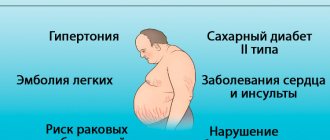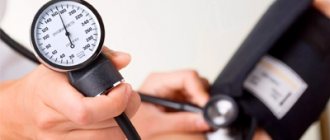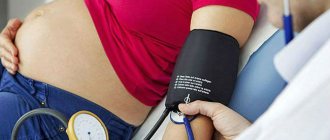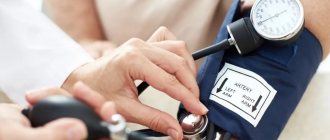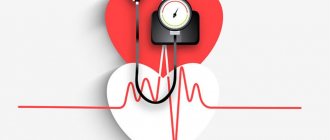General recommendations for nutrition for hypotensive patients:
- Meals should be small and frequent. If you eat a large amount of food at once, you will become oversaturated (overeating), and your blood pressure will drop further.
more. - In this state, you should not allow yourself to feel hungry, no exhausting diets for weight loss (hypotonic people are usually quite thin people), no long breaks between meals.
- If you can’t eat on time, you need to be prudent: always carry something nutritious and high-calorie, preferably sweet, with you, just in case. It could be caramel, halva, a piece of chocolate, nuts, dried fruits, banana. When you feel the first attack of weakness caused by hunger, you must immediately drown it out by eating some of these foods. Prolonged fasting with low blood pressure can cause fainting.
- Hypotonics are much luckier in terms of nutrition than hypertensives. People with low blood pressure are allowed to eat almost everything, but, of course, in moderation. Food should be tasty, healthy, high in calories, varied and rich in vitamins. A balanced diet that includes healthy microelements, fats, proteins, and carbohydrates in sufficient quantities will help you stay in shape and regularly recuperate.
- Iron deficiency anemia is a common companion to hypotension. Therefore, the menu of a person with low blood pressure should include foods containing iron (buckwheat, liver, pomegranate, walnuts, spinach).
- With hypotension, there is often a poor appetite; it can be increased by consuming hot and spicy spices, as well as by the pleasant appearance of the prepared dish. A beautiful table setting will not go amiss. The process of eating should bring pleasure and evoke positive emotions. It is good to stimulate the appetite of a person with low blood pressure with a long walk before meals: fresh air and moderate fatigue can cause a healthy feeling of hunger.
- Among other things, a hypotensive person must monitor his emotional background. Excessive excitement and neuroses can cause either complete loss of appetite or insatiable hunger. Both will have an equally bad effect on blood pressure, which may drop even further.
General rules
Arterial hypotension ( hypotension ) is considered to be a state of low blood pressure , in which stable systolic blood pressure is below 90, and diastolic blood pressure is below 60 mm Hg.
Art. This condition can be either a physiologically normal phenomenon (with a hereditary predisposition) or pathological (primary and secondary hypotension). Primary hypotension, which most often manifests itself in the form of neurocirculatory asthenia , is an independent disease caused by the influence of negative psycho-emotional factors leading to stress and chronic fatigue syndrome.
Secondary arterial hypotension develops against the background of other diseases ( stomach ulcers , osteochondrosis of the cervical spine, pancreatitis , anemia , tuberculosis , diabetes mellitus , brain injuries, hepatitis , diseases of the endocrine system, cystitis , circulatory disorders, intoxication, rheumatism , as a side effect of medications , alcoholism , mental trauma, heart failure) and treatment of this form of hypotension is aimed primarily at treating the underlying disease.
Treatment of primary hypotension requires an integrated approach and includes correction of the patient’s lifestyle with taking medications that help increase arterial tone. Lifestyle correction is aimed at proper nutrition, healthy sleep, alternating psychological stress and rest, and moderate physical activity.
Diet for low blood pressure
A diet for low blood pressure, as such, is absent in the classical sense of this term. However, proper nutrition with low blood pressure helps normalize blood pressure and improve the general condition of the patient. The basis should be a physiologically complete diet containing all the necessary macronutrients with a high content of table salt, potassium, magnesium, and vitamins . At the same time, it is recommended to include foods that increase blood pressure in your diet.
The diet should include:
- Products (sauerkraut, pickles and other pickles) and dishes with a moderately high salt content (in the absence of contraindications) up to 15-20 g per day. Sodium binds water in the body, which leads to an increase in circulating blood volume and an increase in blood pressure.
- Fatty foods (butter, cheeses, fatty meats, poultry, fish, offal, heavy cream). Fat contributes to an increase in blood pressure to a certain extent, since the circulation of cholesterol in the bloodstream somewhat impedes blood flow, thereby causing an increase in pressure.
- Dishes richly flavored with herbs/spices (allspice, bay leaf, cumin, cinnamon, basil), since spices increase the activity of the endocrine glands, which contributes to the narrowing of blood vessels and increased blood pressure. It is recommended to include various sauces (mustard, horseradish, ketchup) and smoked foods, as well as spicy soups with vegetable broths in the diet.
- Baked goods that contain high-calorie foods and carbohydrates - butter, eggs, spices, premium flour, which help normalize blood pressure.
- Products high in starch (rice, potatoes, semolina, oats) and amino acids (nuts of all varieties).
- Tonic foods and drinks containing caffeine (chocolate, cocoa, natural coffee, green tea, cola, energy drinks). At the same time, coffee and tea should be sweet, since arterial hypotension is often combined with hypoglycemia (decreased blood glucose concentration).
- Foods rich in vitamin C and B vitamins (especially B3 ) - milk, carrots, egg yolk, yeast, liver, sprouted wheat grains, sorrel, spinach, pomegranate).
- Vegetables and fruits such as celery, sour apples, lettuce, and cabbage have pronounced tonic properties. Honey and bee products are extremely useful.
- Drinking regime - the volume of free liquid should be at least 2 l/day.
Meals should be fractional, in small portions. The diet is especially relevant for patients with postprandial hypotension (a decrease in blood pressure caused by food intake).
To prevent postprandial reactions, it is recommended to include in the diet the intake of adaptogens, which include plant substances that have a stimulating effect on the central/autonomic nervous system (Rhodiola rosea, Leuzea, Eleutherococcus, Aralia, Schisandra, ginseng root, licorice root), which can be added to tea or other drinks.
Causes of low blood pressure
Low blood pressure can be temporary or long-lasting. It may also indicate an underlying medical condition. Causes of low blood pressure may include:
- aging
- long bed rest
- some medications
- side effects of high blood pressure medications
- diabetes
- pregnancy
- heart disease
- endocrine problems
- severe infection
- severe allergic reaction (anaphylaxis)
- decreased blood volume from bleeding or dehydration
- Deficiency of nutrients such as vitamin B12 and folic acid
Authorized Products
A diet for hypotension should provide the body with the physiological norm of proteins, fats and carbohydrates and should include foods and dishes with a moderately high salt content - various pickles, canned meat and fish, smoked meats, salted fish, fish caviar, raw smoked sausages.
It is recommended to include in the diet dishes richly flavored with herbs/spices (bay leaf, garlic, allspice, cloves, cumin, cinnamon, basil, dill, parsley, as well as various sauces (ketchup, mustard, horseradish), spicy meat, fish and vegetables broths and first courses based on them (kharcho soup, solyanka, borscht). The diet should contain dairy and fermented milk products. Fatty meats, fish, poultry, cheeses, butter, chicken eggs, foods high in starch are useful in the diet (rice, potatoes), various types of nuts, honey and bee products.
An important component of the diet are foods containing vitamins and microelements - liver, egg yolk, sprouted wheat grains, yeast, sorrel, spinach, legumes, celery.
A mandatory element of the diet of hypotensive patients should be foods and drinks containing caffeine (cocoa, chocolate, natural coffee, cola, strong green and black tea, energy drinks). As for fruits, it is recommended to include black currants, cherries, lemons, pomegranates and their freshly squeezed juices, and rosehip decoction in your diet.
Table of permitted products
| Proteins, g | Fats, g | Carbohydrates, g | Calories, kcal | |
Vegetables and greens | ||||
| canned vegetables | 1,5 | 0,2 | 5,5 | 30 |
| zucchini | 0,6 | 0,3 | 4,6 | 24 |
| cauliflower | 2,5 | 0,3 | 5,4 | 30 |
| potato | 2,0 | 0,4 | 18,1 | 80 |
| bulb onions | 1,4 | 0,0 | 10,4 | 41 |
| carrot | 1,3 | 0,1 | 6,9 | 32 |
| beet | 1,5 | 0,1 | 8,8 | 40 |
| pumpkin | 1,3 | 0,3 | 7,7 | 28 |
| horseradish | 3,2 | 0,4 | 10,5 | 56 |
| spinach | 2,9 | 0,3 | 2,0 | 22 |
| sorrel | 1,5 | 0,3 | 2,9 | 19 |
Fruits | ||||
| apricots | 0,9 | 0,1 | 10,8 | 41 |
| watermelon | 0,6 | 0,1 | 5,8 | 25 |
| bananas | 1,5 | 0,2 | 21,8 | 95 |
| melon | 0,6 | 0,3 | 7,4 | 33 |
| nectarine | 0,9 | 0,2 | 11,8 | 48 |
| peaches | 0,9 | 0,1 | 11,3 | 46 |
| apples | 0,4 | 0,4 | 9,8 | 47 |
Berries | ||||
| strawberry | 0,8 | 0,4 | 7,5 | 41 |
| raspberries | 0,8 | 0,5 | 8,3 | 46 |
Mushrooms | ||||
| marinated mushrooms | 2,2 | 0,4 | 0,0 | 20 |
Nuts and dried fruits | ||||
| nuts | 15,0 | 40,0 | 20,0 | 500 |
| raisin | 2,9 | 0,6 | 66,0 | 264 |
| dried apricots | 5,2 | 0,3 | 51,0 | 215 |
| seeds | 22,6 | 49,4 | 4,1 | 567 |
| prunes | 2,3 | 0,7 | 57,5 | 231 |
Cereals and porridges | ||||
| buckwheat (kernel) | 12,6 | 3,3 | 62,1 | 313 |
| semolina | 10,3 | 1,0 | 73,3 | 328 |
| white rice | 6,7 | 0,7 | 78,9 | 344 |
Flour and pasta | ||||
| pasta | 10,4 | 1,1 | 69,7 | 337 |
| noodles | 12,0 | 3,7 | 60,1 | 322 |
Confectionery | ||||
| jam | 0,3 | 0,2 | 63,0 | 263 |
| jelly | 2,7 | 0,0 | 17,9 | 79 |
| marshmallows | 0,8 | 0,0 | 78,5 | 304 |
| pastry cream | 0,2 | 26,0 | 16,5 | 300 |
| paste | 0,5 | 0,0 | 80,8 | 310 |
Ice cream | ||||
| ice cream | 3,7 | 6,9 | 22,1 | 189 |
Chocolate | ||||
| chocolate | 5,4 | 35,3 | 56,5 | 544 |
Raw materials and seasonings | ||||
| mustard | 5,7 | 6,4 | 22,0 | 162 |
| honey | 0,8 | 0,0 | 81,5 | 329 |
| sugar | 0,0 | 0,0 | 99,7 | 398 |
Dairy | ||||
| milk 4.5% | 3,1 | 4,5 | 4,7 | 72 |
| kefir | 3,4 | 2,0 | 4,7 | 51 |
| cream 35% (fat) | 2,5 | 35,0 | 3,0 | 337 |
| sour cream 30% | 2,4 | 30,0 | 3,1 | 294 |
| curdled milk | 2,9 | 2,5 | 4,1 | 53 |
Cheeses and cottage cheese | ||||
| parmesan cheese | 33,0 | 28,0 | 0,0 | 392 |
| cottage cheese | 17,2 | 5,0 | 1,8 | 121 |
Meat products | ||||
| boiled beef | 25,8 | 16,8 | 0,0 | 254 |
| beef liver | 17,4 | 3,1 | 0,0 | 98 |
| boiled veal | 30,7 | 0,9 | 0,0 | 131 |
| rabbit | 21,0 | 8,0 | 0,0 | 156 |
| bacon | 23,0 | 45,0 | 0,0 | 500 |
Sausages | ||||
| smoked sausage | 9,9 | 63,2 | 0,3 | 608 |
Bird | ||||
| boiled chicken | 25,2 | 7,4 | 0,0 | 170 |
| turkey | 19,2 | 0,7 | 0,0 | 84 |
| duck | 16,5 | 61,2 | 0,0 | 346 |
| smoked duck | 19,0 | 28,4 | 0,0 | 337 |
| goose | 16,1 | 33,3 | 0,0 | 364 |
Eggs | ||||
| chicken eggs | 12,7 | 10,9 | 0,7 | 157 |
Fish and seafood | ||||
| smoked fish | 26,8 | 9,9 | 0,0 | 196 |
| black caviar | 28,0 | 9,7 | 0,0 | 203 |
| salmon caviar granular | 32,0 | 15,0 | 0,0 | 263 |
| salmon | 19,8 | 6,3 | 0,0 | 142 |
| salmon | 21,6 | 6,0 | — | 140 |
| trout | 19,2 | 2,1 | — | 97 |
Oils and fats | ||||
| butter | 0,5 | 82,5 | 0,8 | 748 |
| ghee | 0,2 | 99,0 | 0,0 | 892 |
Non-alcoholic drinks | ||||
| mineral water | 0,0 | 0,0 | 0,0 | — |
| cola | 0,0 | 0,0 | 10,4 | 42 |
| black tea with milk and sugar | 0,7 | 0,8 | 8,2 | 43 |
Juices and compotes | ||||
| apricot juice | 0,9 | 0,1 | 9,0 | 38 |
| carrot juice | 1,1 | 0,1 | 6,4 | 28 |
| * data is per 100 g of product | ||||
Dried fruits, are there any benefits?
Dried berries and fruits in moderation are beneficial for hypotensive patients. For low blood pressure it is recommended to use:
- dates – quickly satisfy hunger, give vigor, and charge with energy;
- raisins – rich in organic acids, enriches the blood, normalizes blood pressure, prevents acute attacks of hypotension;
- dried apricots - indicated for heart diseases, the high concentration of calcium salts increases hemoglobin and maintains the elasticity of blood vessels.
If you have hypotension, you can eat 50-100 g of dried fruits every day.
Reviews and results
- “...Hypotonic from birth. For as long as I can remember, my blood pressure has always been 100/75, 90/60, and sometimes lower. This does not cause me any particular concern, but periodically (when the weather changes, after severe tension, stress), the pressure drops to 80/60, severe headaches, nausea, and dizziness appear. I know well which foods increase blood pressure, but strong tea and coffee help me; in severe cases, I take 2 caffeine tablets. From time to time I take a course of biological stimulants - Aralia Manchurian or Schisandra. A contrast shower helps a lot.”
Symptoms of Low Blood Pressure
Many people with low blood pressure have no symptoms. Hypotension occurs when there is insufficient pressure to deliver oxygenated blood to the organs. The following symptoms may occur with this condition:
- dizziness
- nausea
- fainting
- dehydration and extreme thirst
- blurred vision
- fatigue
- rapid, shallow breathing
- cold, clammy and pale skin
- depression
- lack of concentration
Table No. 10
There is a special diet for hypertension and atherosclerosis - table No. 10. Its main criteria are avoidance of salt consumption, and you should also drink no more than 1.2 liters of liquid per day. Another mandatory measure of the tenth diet is reducing the calorie content of food. For hypertension, eating according to these rules will help saturate the body with essential microelements. These substances help normalize fat metabolism, so that they are not deposited in the liver and blood vessels.
That is why diet therapy involves eating foods that are quickly digested and prepared only by baking, boiling or steaming. Proper nutrition for hypertension should contain a certain amount of calories. The calorie content of food eaten should not exceed 2500 kcal. in a day. It is better to cancel salt or reduce it to 4 g per day.
The exact scheme of the daily menu should include about 70 g of fat (20% of which comes from vegetable fats), carbohydrates should be about 400 g, and proteins should be 90 g (no more than 50% of which should be of animal origin). For hypertension, a diet according to these rules is necessary, as it will prevent the development of atherosclerosis.
It should be noted that you should not eat if you have hypertension:
- Fresh baked goods. A diet for arterial hypertension involves eating stale, slightly dried bread, which is made from flour with bran.
- Baked goods and puff pastry are prohibited, as these products contain sugar and margarine, which are contraindicated for hypertension and atherosclerosis.
- Duck and goose meat, offal.
- Fatty dairy products, salty cheese.
Added to the list of what you cannot eat are sauerkraut, salted and pickled vegetables, raw onions and garlic, radishes, mushrooms, spinach, and sorrel. You can't eat lard either.
The high blood pressure diet suggests that the meat should first be boiled in one water, which should be drained after the meat has boiled. Next, it is boiled in new water, and only after that the dish can be eaten. Meats allowed include turkey, chicken, veal, beef, and rabbit.
Diet for arterial hypertension No. 10 allows pasta from durum wheat and cereals. Only their preparation must be correct - cook with water or milk, without adding salt and sugar. This diet for stage 2 hypertension is also effective, and medical practice proves this.
